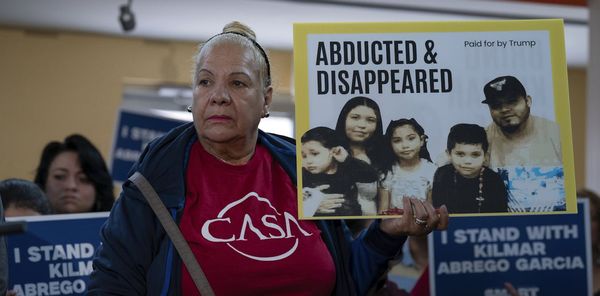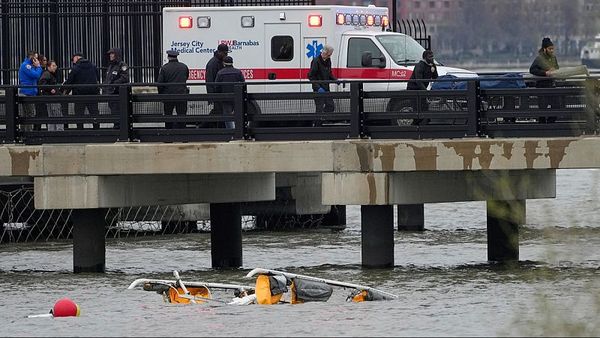
Politicians across parties are proposing ways to promote vocational education in England. Rishi Sunak has pledged to limit “rip-off” university courses and boost apprenticeships – diverting school students away from university and towards vocational education.
Labour leader Keir Starmer has spoken of his desire to end “the snobbery that looks down on vocational education” through curriculum reform. These include a greater focus on digital skills and verbal fluency in the classroom. He also wants to ensure that children study a creative art or sport until age 16.
Meanwhile, Andy Burnham, the Labour mayor of Greater Manchester, has launched proposals for a Manchester baccalaureate, currently at consultation stage. The Mbacc is intended to offer a clearer route from the age of 14 for students who want to follow a vocational pathway towards employment rather than university.
However, these proposed reforms may merely entrench the division between academic and vocational education. A more radical proposal could see the two paths integrated throughout the school system – with all students picking from both academic and vocational subjects.
Separate paths
The divided system in English education has been in place since the 1944 Education Act. This established a tiered system of grammar schools for children judged more academically able, technical grammars that focused on vocational skills, and secondary moderns for the majority. Which school children went to was decided by a test taken at age 11.
In the early 1950s, only around 20% of children went to grammar schools. Most other children went to secondary moderns, since so few technical grammars were built. Selection at 11 was removed in most counties in England and Wales by the mid-1970s. But the idea of separate academic and vocational pathways has remained to this day in post-16 education, with separate qualifications available.
Recent attempts to close the gap between academic and vocational qualifications have, arguably, been unsuccessful. T-levels were introduced to be a vocational and equal status alternative to A-levels, but have not been received as such. Not all universities accept them for entrance. This sends a clear message to young people that a vocational choice is seen as second best.
Learners are affected physically as well as emotionally by this hierarchy. Students are often separated into different institutions or study on the same site but in different buildings. School sixth forms largely only offer A-levels, so young people following a vocational pathway must go elsewhere, such as a further education college.
Changing public attitudes takes time. Research by one of us (Elizabeth Gregory) with students suggests that their narratives around vocational qualifications are getting more positive. Almost all the study’s participants on a vocational pathway wanted to go on to university, and all spoke about the skills they were developing to secure the career of their choice. But parents and teachers – whose opinions were valuable to the students – still saw academic qualifications as the better option.
Changing the system
An important change would be to end the physical division that separates young people. This means students being taught alongside one another in the same institutions, regardless of pathway.
More support is needed for teachers if they are to provide even-handed advice to students and their families. Vocational pathways should be recommended because this is the best option for the student, rather than a second-best option for those not as good at exams.
Parity in entrance requirements is also needed. Universities have a duty to ensure applicants are suitable for their chosen course. However, excluding young people with appropriate vocational qualifications maintains the hierarchies that suggest some types of knowledge are more valuable than others.
A radical change, though, might work even better.
Twenty years ago, a review of 14-19 education, commissioned by the government, recommended a structure that would let young people mix and match vocational and academic qualifications until they were 18 or 19. The idea was a common diploma for all, where a range of interests could be pursued without the need to choose between different – and differently valued – qualification types.
These radical suggestions were not implemented, but there have been more recent calls to revisit them, from both academics and educational activists.
Now that all young people have to stay in education or training until they are 18, a system like this could feasibly be put in place.
What’s more, proposed changes to higher education funding would see the introduction of a tuition-fee loan that could be used flexibly over a person’s working life. This could further reduce the need to make early education and career decisions, opening up routes to both vocational and academic qualifications later in life.
If politicians want to tackle inequalities in secondary education and create academic and vocational qualifications that promote equality rather than perpetuate hierarchies, more sweeping reforms may be needed than those currently on the table.
Kathryn Telling is a member of the Socialist Educational Association's National Executive.
Elizabeth Gregory does not work for, consult, own shares in or receive funding from any company or organisation that would benefit from this article, and has disclosed no relevant affiliations beyond their academic appointment.
This article was originally published on The Conversation. Read the original article.







